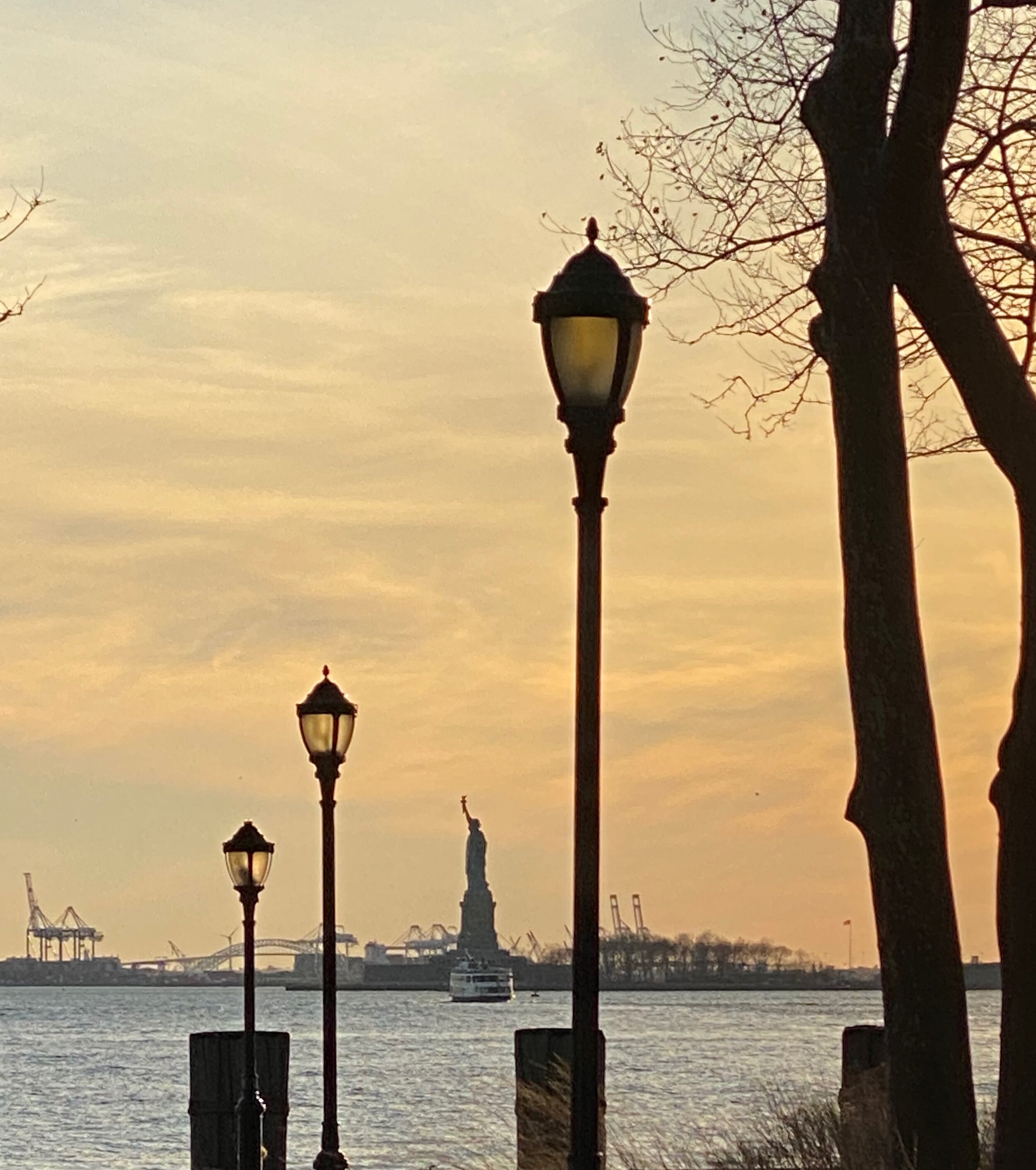Ellis Island and the Statue of Liberty
/The statue’s symbolism is significant. The statue is based on images of the Roman goddess Libertas. She holds a torch in her right hand lifted high, lighting the way into the future. In her left hand she cradles a tabula ansata (tablet with dove tailed handles…very Roman) and on the tablet is inscribed July 4, 1776 in Roman numerals. At her feet are broken chains and shackles as she walks forward in acknowledgement of the recent abolition of slavery resulting from the 1865 Civil War.
The statue was placed on Beloe’s Island in Upper New York Bay which later became Liberty Island. The statue itself in 151 feet 1 inch and the total height from the ground is 305 feet and 1 inch.
Copy of Emma Lazarus’ plaque of “The New Colossus” in the Statue of Liberty Museum on Liberty Island. The poem ends with, “Send these, the homeless, tempest-tost to me, I lift my lamp beside the golden door!” Moody Analytics analyzed our current immigration data and estimated that if annual United States immigration stayed at only 200,000 rather than a more normal one million, gross domestic product would be $1 trillion lower a decade from now. https://www.nytimes.com/2019/10/11/business/immigration-cuts-economy.html
Conceptualized by French professor and politician Edouard Rene de Laboulaye, the statue was designed by French sculptor Frederic Auguste Bartholdi (the statue) and Gustave Eiffel (the inner support structure). The statue was built in France and shipped to the United States in pieces. It was the American people who funded and built the pedestal. The final push for the pedestal came from a drive organized by Joseph Pulitzer (the publisher) and donations from more than 120,000 Americans, most less than a dollar, which allowed the pedestal to be completed.
We took the ferry took to Ellis Island, the landing spot for nearly 12 million immigrants between 1892 and 1924. From 1924 to its closure in 1954 it was primarily used as a detention center.
The Line Ahead of us waiting to enter the inspection station where there were inspection points just like the metal detectors at airports.
I was surprised by how open and inviting the huge brick buildings looked. We had a late lunch in the dinning hall. There we met a docent who told us more than we could ever have thought of knowing about this segment of our history.
We learned that the people who sailed first and second class did not stop at the immigration facility. Immigration officers assumed that if you could afford to travel first or second class then you would be self-sufficient in the United States. Third Class and Steerage passengers were interviewed but the most important question concerned occupation and where you intended to work. There was a question on the registry asking if the applicant had $30, most answered “No” but this was not a criterion for admission
If you had been hired in your homeland and were coming in as a contract worker, meant you might take jobs from existing workers. This was a bad answer and might lead to you being returned. The good answer was that you were coming to be with friends or family, meaning you had a support group to help you get started and you were willing to work, with an established skill/trade.
The line behind us which stretched for over 100 yards. We arrived at noon, with a confirmed time to board the ferry. These were all general guests to board the ferry. Be sure and make reservations with a set boarding time and come early.
At the first stop the waited off Staten Island outside of New York Harbor for a quarantine inspection. After a successful quarantine inspection immigration officers boarded using rope ladders and started the interview process with first and second class passengers while the ship docked at Staten Island.
After the first and second class passengers disembarked at Staten Island the ship sailed on to Ellis Island with the third class and steerage passengers. When they had boarded the ship in Europe each person was given a manifest tag so immigration officers could find their information. Customs officers checked baggage while immigration officers confirmed the manifest information.
There were 29 questions to answer. If your answers matched the information of the ships manifest and there was nothing medically questionable you could be processed through in as little as an hour.
An evening view of the Statue of Liberty from Battery Park
We were not able to do any research. The records room closed at 4:00 PM. Because of the ferry transport and the island being a National Park and closing at 5:00 PM the staff made sure people were leaving and the last visitors were gone at 5:00. Note: If you go make sure to catch the first ferry (Statue Cruises leaving from Battery Park) at 8:30 AM.
We walked through the halls of the main building. We browsed through the hundreds of photographs of the new arrivals in the various side rooms. In your mind’s eye you try to imagine what it must have been like for these immigrants to have left everything they knew behind and exchanged it for a completely unknown future. In Ireland there was such certainty that those immigrating would never be seen again it became the custom to send the people off with a wake.
The statue and the processing island have come to represent our society’s approach and attitude toward immigration and the difference between then and now. When they arrived at Ellis Island for processing, they were treated respectably, as people who would contribute to a growing United States. Papers were unnecessary and most were processed through in few hours. A far cry from how we are treating people trying to relocate to our country today.




